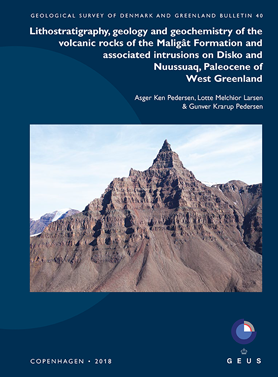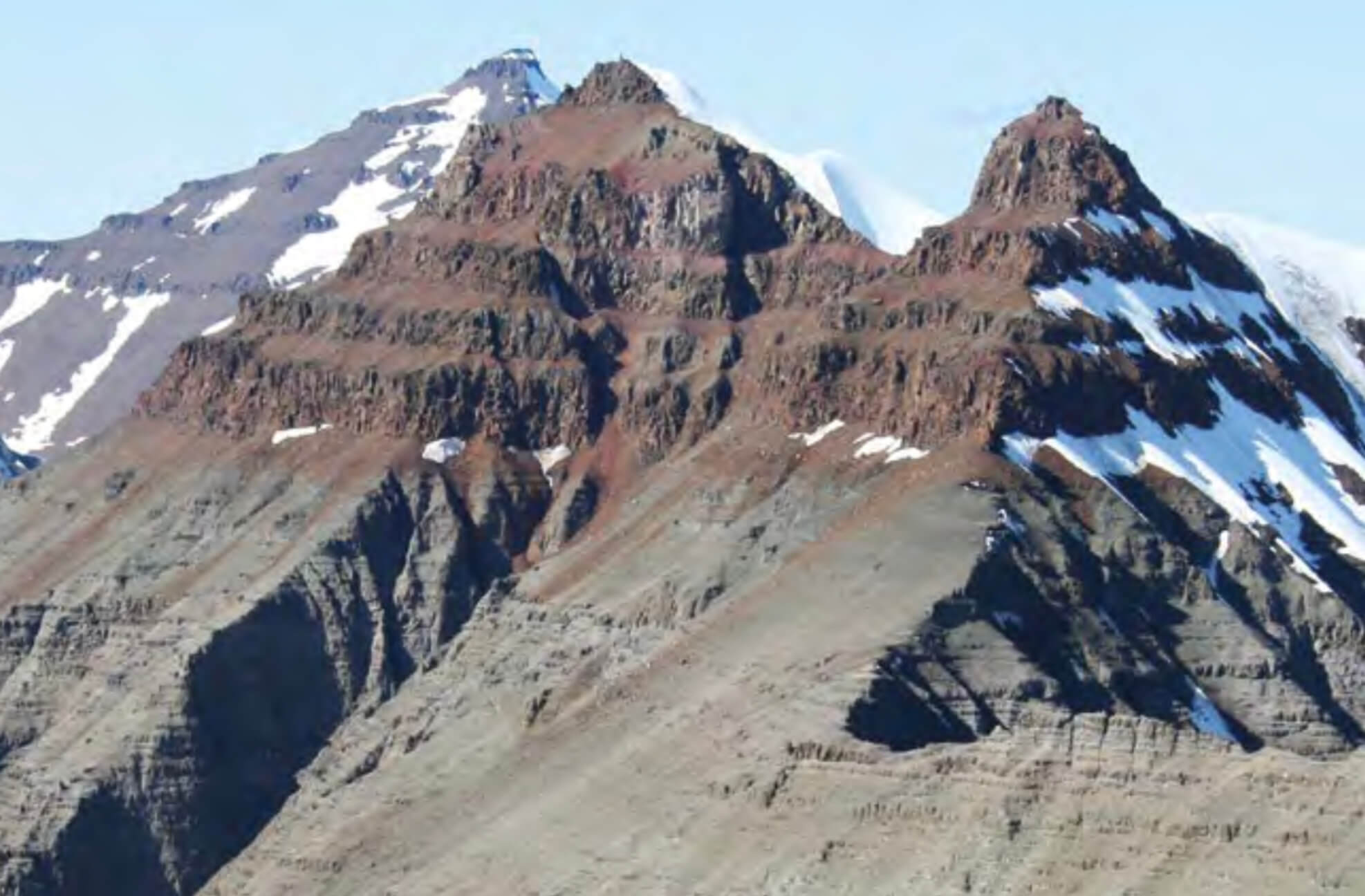Lithostratigraphy, geology and geochemistry of the volcanic rocks of the Maligât Formation and associated intrusions on Disko and Nuussuaq, Paleocene of West Greenland
Asger Ken Pedersen, Lotte Melchior Larsen and Gunver Krarup Pedersen
The upper Cretaceous–Tertiary Nuussuaq Basin in West Greenland contains a many kilometres thick succession of siliciclastic sediments and overlying volcanic rocks. The first studies in the early 19th century were centred on the coal and fossils in the sediments and the minerals in the volcanic rocks, including famous occurrences of native iron. The present focus of interest includes modern stratigraphic and volcanological studies to decipher the basin evolution and support hydrocarbon and mineral exploration.
This bulletin presents the lithostratigraphy, geology and geochemistry of the Paleocene volcanic rocks of the Maligât Formation and its related intrusions on Disko and the Nuussuaq peninsula; it concludes with a detailed discussion of the effects of crustal contamination processes. The Maligât Formation is up to 2000 m thick and comprises four formally defined members and 15 chemically defined informal units. It is mainly composed of basalt lavas but also includes basaltic andesite, andesite and dacite flows and rhyolite tuffs. The silicic rocks and intrusions were produced by contamination in high-level magma chambers and commonly contain native iron.
The comprehensive descriptions and analyses of each member and unit represent a synthesis of many years of work and are intended to serve as a guide for future studies, including exploration for mineral deposits associated with some units of the formation.
A companion bulletin (volume 39) on the volcanic rocks of the picritic Vaigat Formation that underlies the Maligât Formation was published in 2017.






